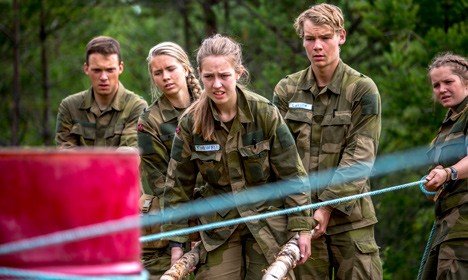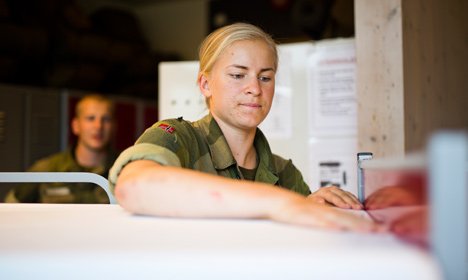The new law has resulted in almost a third of this summer's conscript intake being women.

Selection camp 2016. Photo: Olav Standal Tangen/Forsvaret
At the Setermoen army base just above the Arctic Circle, new recruits in an armored battalion are learning to handle assault rifles for use on combat missions. Here and there, long ponytails stick out behind the recruits' caps.
"It gives me a bigger recruitment pool to choose from," the battalion's chief, Lieutenant Colonel Pal Berglund, says of the new gender equal draft.

Photo: Julia Kalvik/Forsvaret
Norwegian women have been able to volunteer for military service for almost 40 years now. But in 2013 a virtually unanimous parliament passed a law applying military conscription to both sexes.
The Scandinavian country - where four of the last five defence ministers have been women - has thus become the first NATO member and European country to draft both men and women.
"In operations, it's an advantage having females. They have access to parts of the population that men don't have, for instance for intelligence gathering," says Berglund.
Unisex dorms
Is it not tempting fate to throw young men and women together in unisex bunks?
"We see that exposure to each other increases tolerance, acceptance and understanding toward each other," insists Nina Hellum, a researcher at the Norwegian Research Defence Establishment.
"You don't shit in your own nest. You don't want to have sex and fraternize with anyone in your room for example or in your small unit because that makes it quite awkward."
A 2014 study showed that unisex dormitories helped combat sexual harassment thanks to a phenomenon of "de-genderization". Sharing living quarters makes both the men and women pay more attention to their behaviour, and thus they're able to develop a camaraderie, an almost sibling-like relationship, the study's authors claimed.
Further details: http://thelocal.no/119326
Author verification: http://thelocal.no/steemit